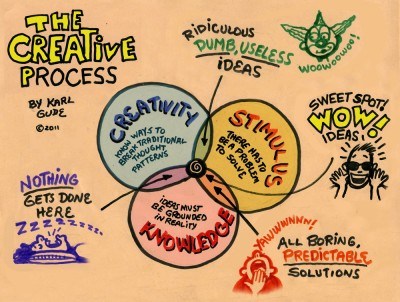There are conflicting points of view on Arts Assessment in the research:
- Performing Arts as Product:
- Performing Arts as Process:
Status quo and old school summative testing philosophies are problematic when applied to the arts, although a product-based assessment stance attempts to do so. Formative and process assessment techniques reflect the realities of the artistic process- that an engaged attempt to “do art” is messy, full of self doubt, and struggle. It is in our reflection on these struggles that the learning happens.
Assessing students on their process is more realistic and reflective of true learning, yet is still problematic in that it tends to be subjective from the teacher’s perspective. It is also challenging to know when the student’s efforts are ‘good enough’ to denote a Pass, or insufficient to reflect a Fail. It is true that some students may be marginalized by a summative marking system, and thus disengaged from the learning process.
The BC Curriculum has moved away from emphasizing summative assessment in all areas. The Arts Education Curriculum Learning Standards and Content focus primarily on process and experience, not product. Learning Standards such as “Explore identity, place, culture, and belonging through arts experiences” and “ Reflect on creative processes and make connections to other experiences” are stated, along with Content such as “personal and collective responsibility associated with creating, experiencing, and performing in a safe learning environment”. These encourage teachers to focus on process, not product.
Followup:
I was tasked with developing a rubric for our performing arts Myth based drama production this semester. Using my knowledge of arts growth and assessment, my research in formative and summative assessment systems, and input from the class on what is important, I created the following rubric which includes both performance assessment and process reflection.
Sources:
http://www.thedramateacher.com/how-to-keep-performance-assessment-in-drama-objective/
Jensen, Eric. (2001) Arts with the Brain in Mind. Association for Supervision and Curriculum Development. USA.
https://curriculum.gov.bc.ca/curriculum/arts-education/4





 RSS Feed
RSS Feed
